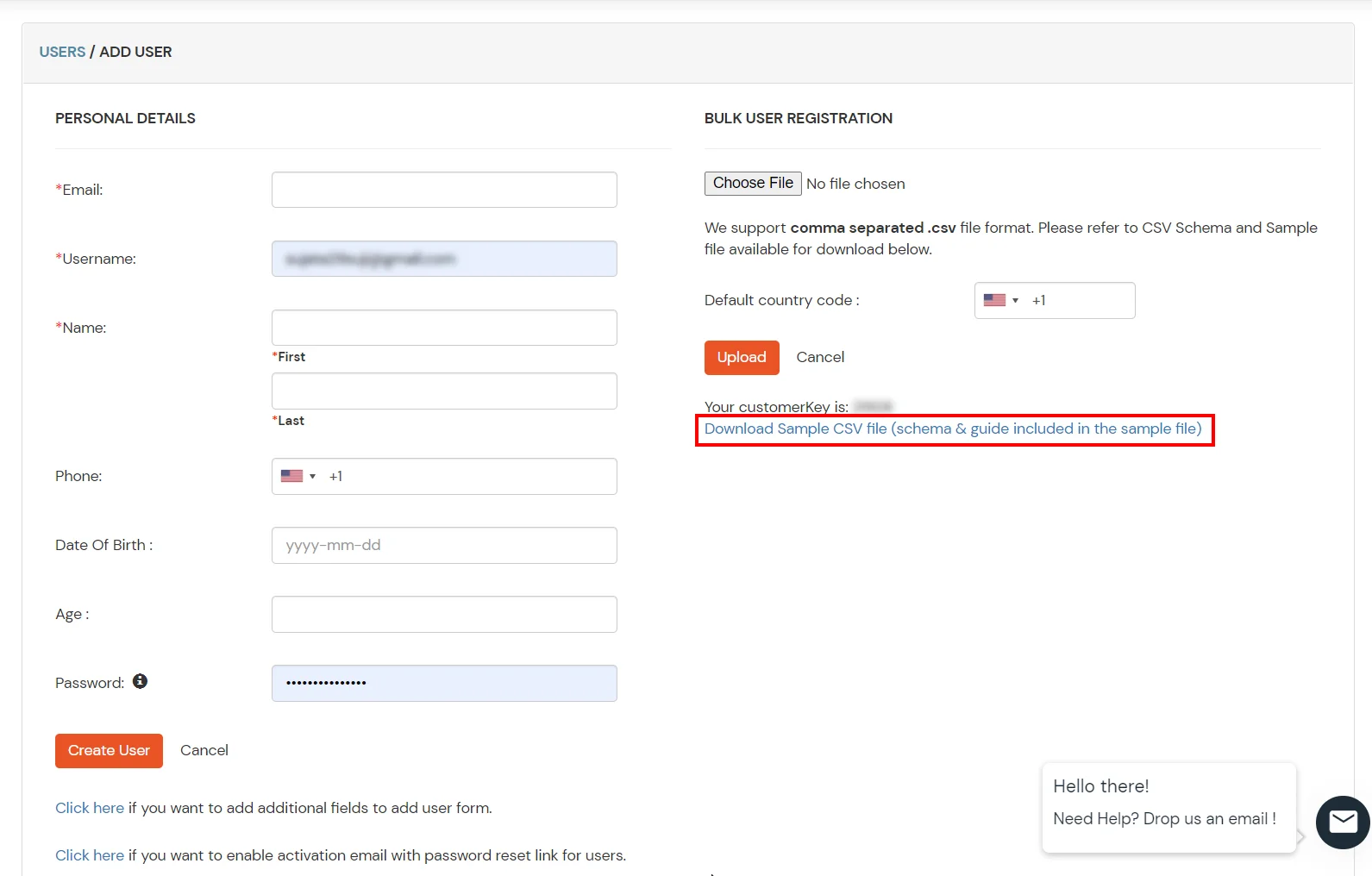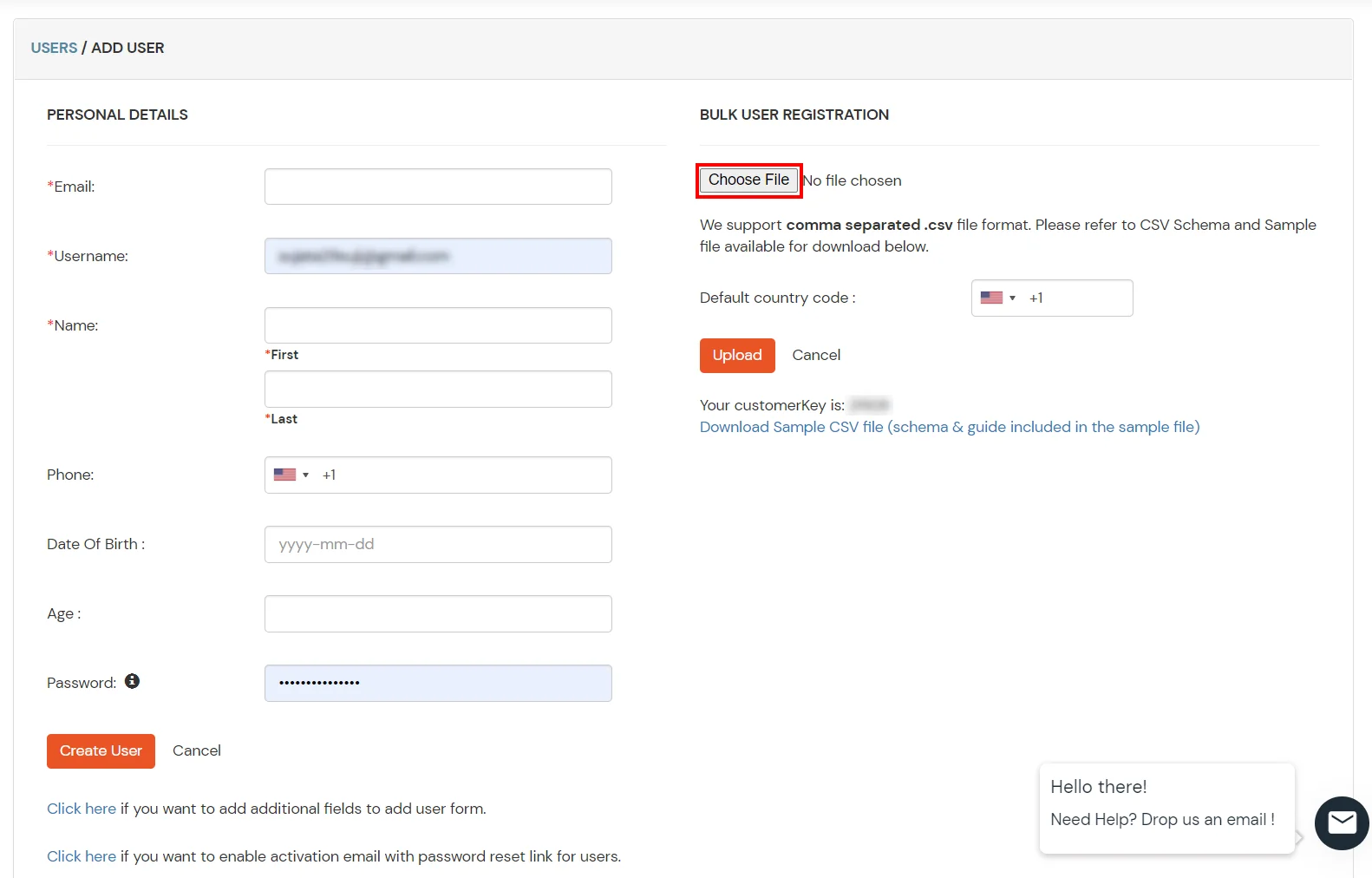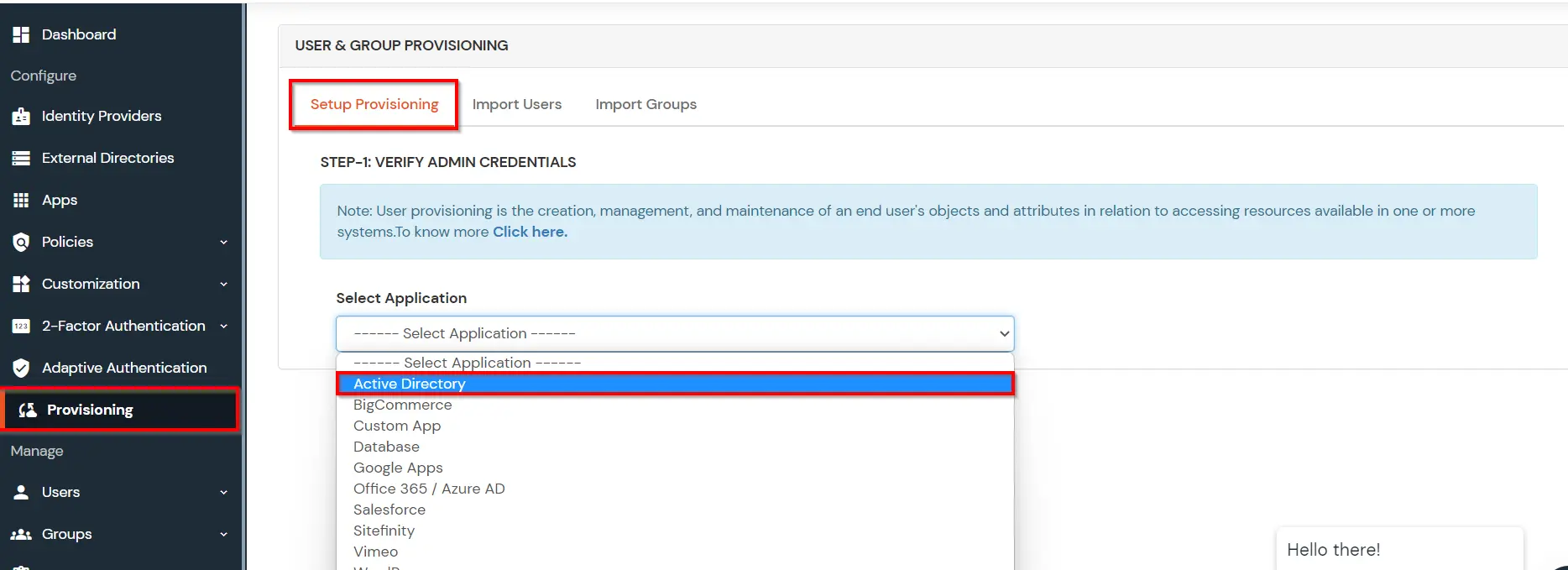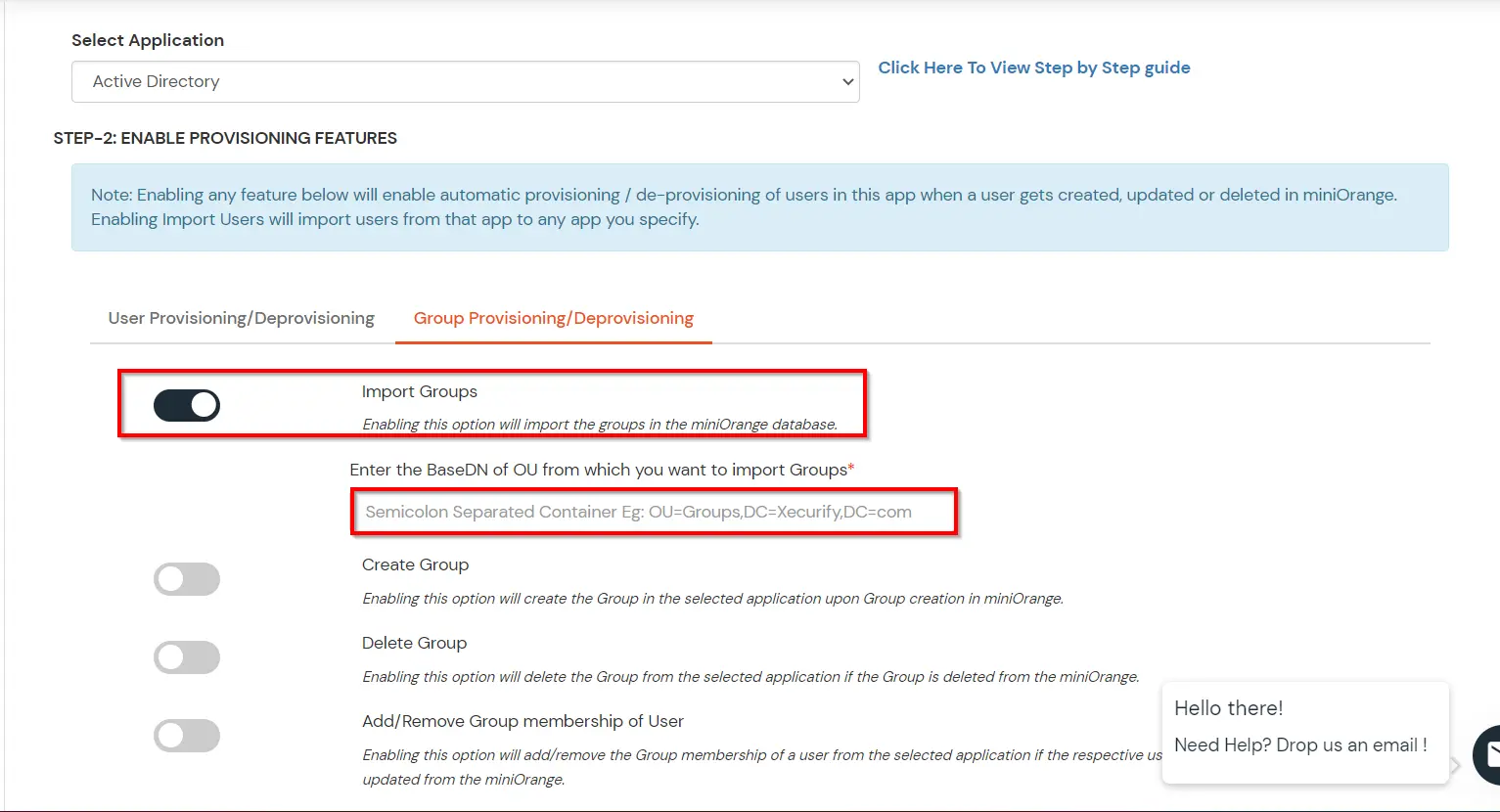Two-Factor Authentication (2FA/MFA) for Oracle DB
Oracle DB is database which uses techniques to provide security to site-to-site connections. Also, it secures a point-to-point connection. You can enable two-factor authentication (2FA) for your change to Oracle DB with Active Directory as a user store to increase security level. When you enable 2FA, your users enter their username and password (first factor) as usual, and as a second factor they have to enter an authentication code which will be shared virtually on their device or in the form of a hardware token. This 2FA/MFA solution adds an additional security measure to prevent unwanted users getting access to your Oracle DB .
Types of 2FA Authentication with RADIUS
The 2-factor authentication can be of two types depending on the applications.
- Applications that support RADIUS Challenge.
- Applications that do not support RADIUS Challenge.
miniOrange 2FA authentication for Oracle DB Login
miniOrange accomplishes this by acting as a RADIUS server that accepts the username/password of the user entered as a RADIUS request and validates the user against the user store as Active Directory (AD). After the first level of authentication, miniOrange prompts the user with 2-factor authentication and either grants/revokes access based on the input by the user.

- Primary authentication initiates with the user submitting his Username and Password for Oracle DB .
- User request acts as an authentication request to RADIUS Server(miniOrange).
- miniOrange RADIUS server passes user credentials to validate against the credentials stored in AD (Active Directory) / Database.
- Once the user's first level of authentication gets validated AD sends the confirmation to RADIUS Server.
- Now miniOrange RADIUS Server asks for a 2-factor authentication challenge to the user.
- Here user submits the response/code which he receives on his hardware/phone.
- User response is checked at miniOrange’s RADIUS Server side.
- On successful 2nd factor authentication the user is granted access to login.
What are different 2FA/MFA methods for Oracle DB supported by miniOrange?
miniOrange supports multiple 2FA/MFA authentication methods for Oracle DB secure access such as, Push Notification, Soft Token, Microsoft / Google Authenticator etc.
| Authentication Type | Method | Supported |
|---|
| miniOrange Authenticator | Soft Token | |
| miniOrange Push Notification | |
| Mobile Token | Google Authenticator | |
| Microsoft Authenticator | |
| Authy Authenticator | |
| SMS | OTP Over SMS | |
| SMS with Link | |
| Email | OTP Over Email | |
| Email with Link | |
| Call Verification | OTP Over Call | |
| Hardware Token | YubiKey Hardware Token | |
| Display Hardware Token | |
You can opt for any of the 2FA methods to secure your Oracle DB . To integrate 2FA, you can enable RADIUS authentication in Oracle DB and configure policies in miniOrange to enable or disable 2FA for users.
Connect with any External Directories
miniOrange provides user authentication from various external directories such as miniOrange Directory, Microsoft AD, Microsoft Entra ID/LDAP, AWS Cognito and many more.
Can't find your Directory? Contact us on idpsupport@xecurify.com
Enable Multi Factor Authentication MFA/2FA for Oracle DB
1. Configure Oracle DB in miniOrange
- Login into miniOrange Admin Console.
- Click on Customization in the left menu of the dashboard.
- In Basic Settings, set the Organization Name as the custom_domain name.
- Click Save. Once that is set, the branded login URL would be of the format https://<custom_domain>.xecurify.com/moas/login
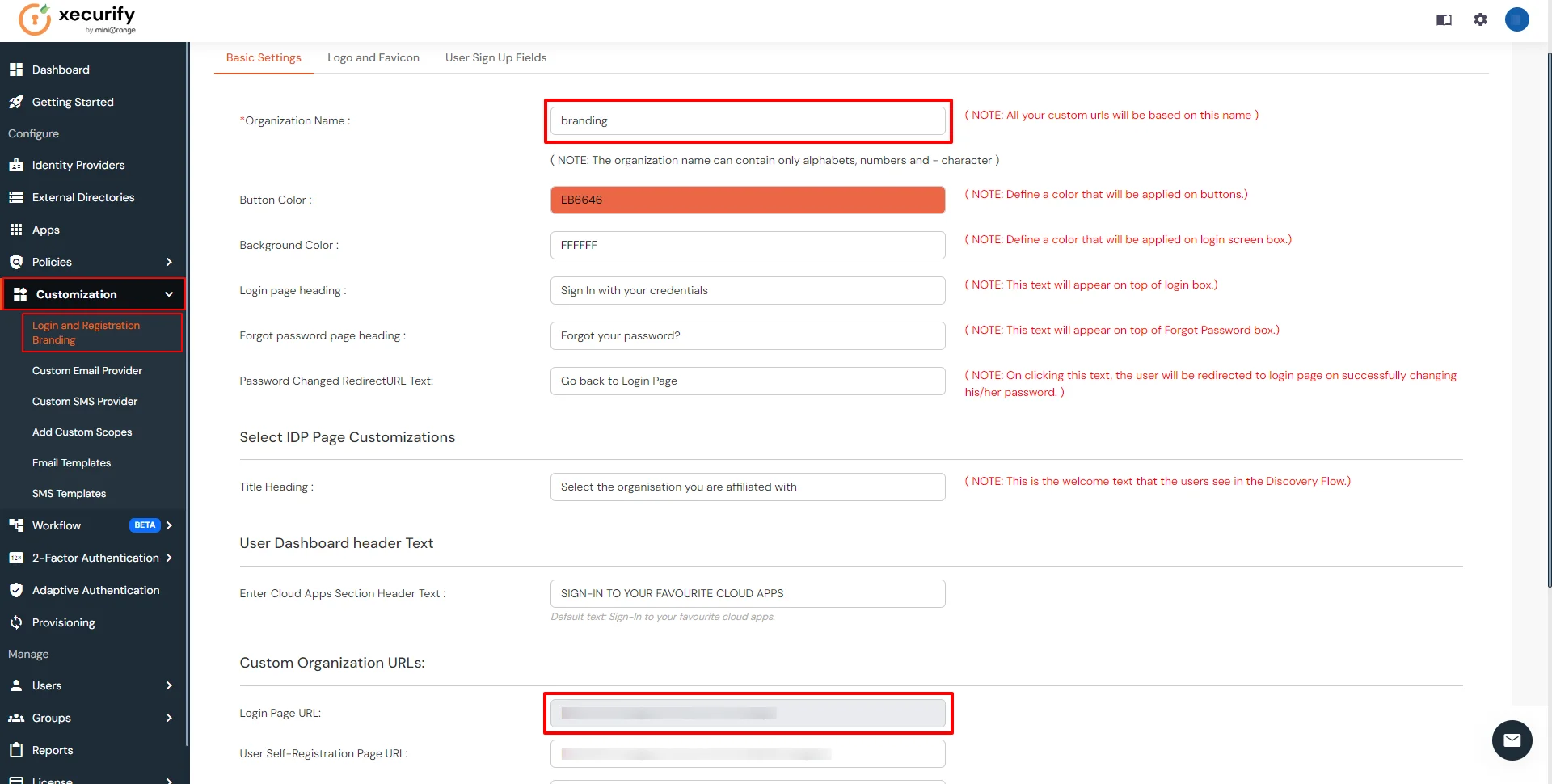
- Go to Apps Click on Add Application button.

- In Choose Application, select RADIUS (VPN) from the application type dropdown.
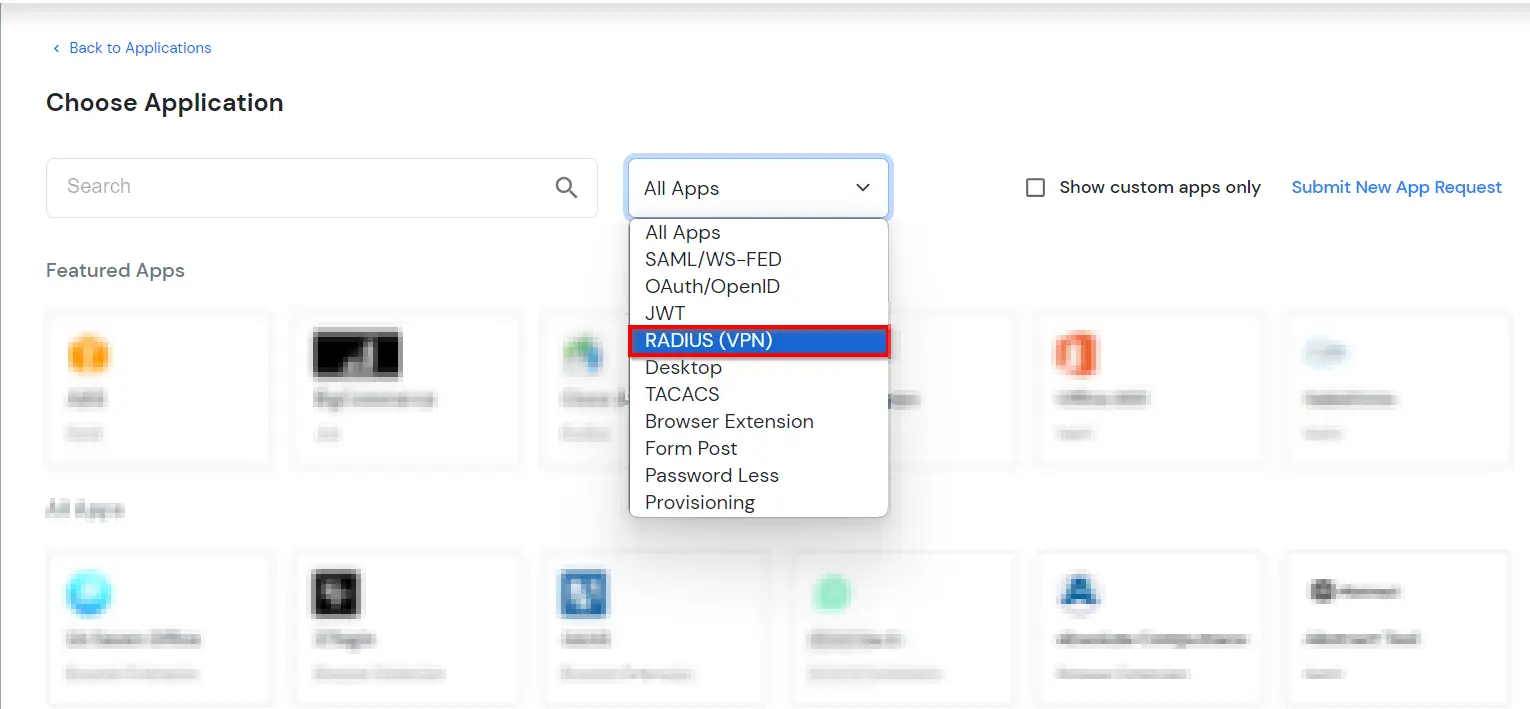
- Click on Oracle DB application tab. If you don't find your application click on Radius Client application tab.

- Click on "Click here" to get the Radius server IPs.
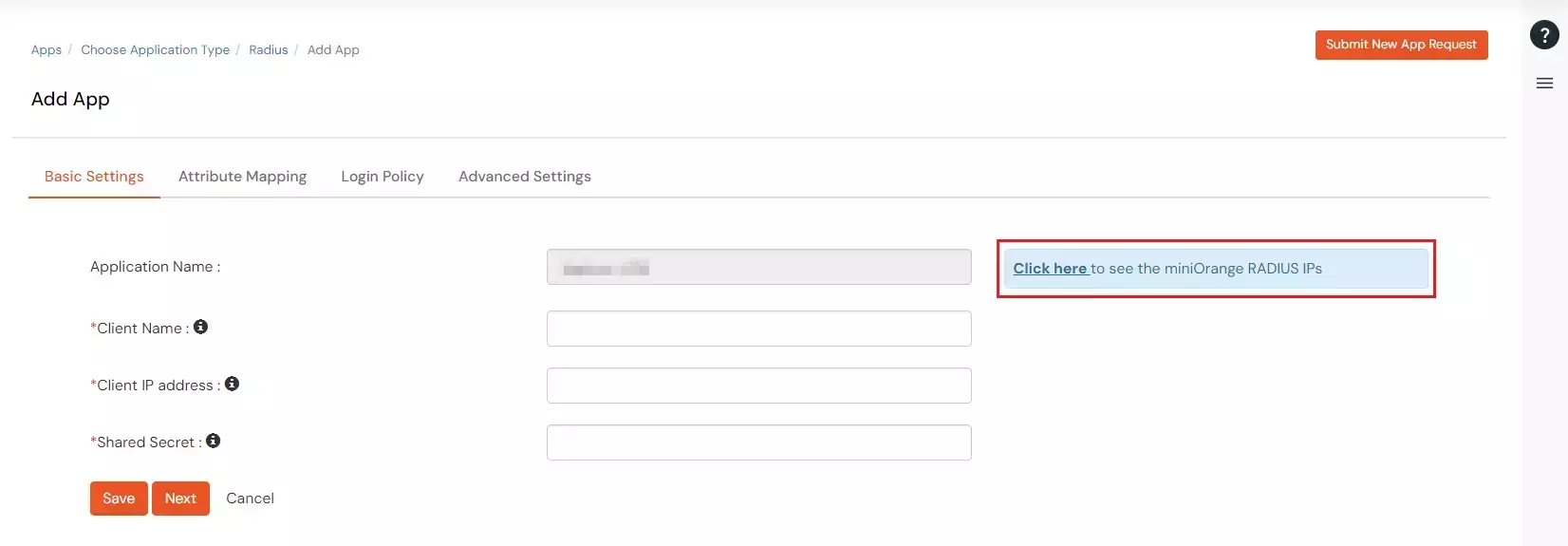
- Copy and save the Radius server IP which will be required to configure your Radius client.
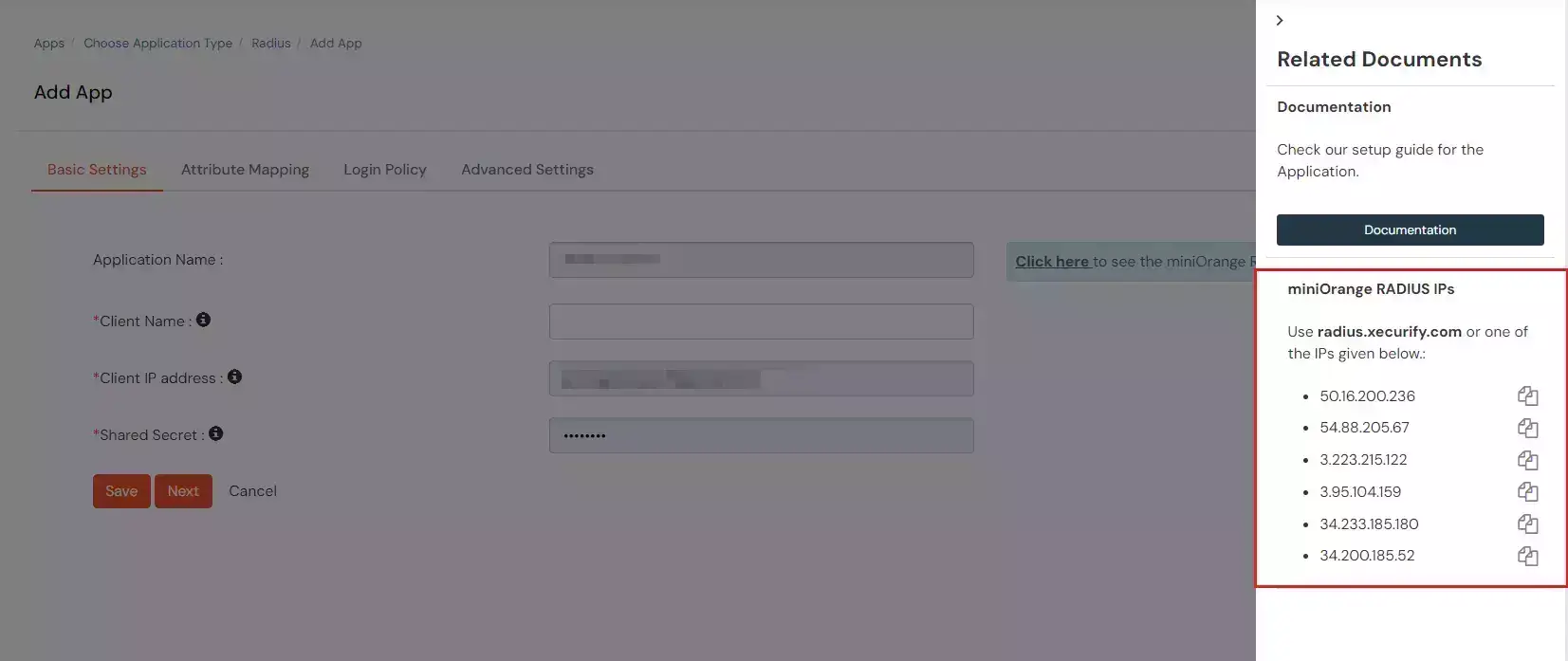
- Configure the below details to add Radius Client.

| Client Name: |
Any name for your reference. |
| Client IP: |
IP address of VPN server which will send Radius authentication request. |
| Shared Secret: |
Security key.
For Eg. "sharedsecret"
(Keep this with you, you will need to configure same on VPN Server). |
- Click Next.
- Under the Attribute Mappings tab, enable the toggle if you want to Send Custom Attributes in response.
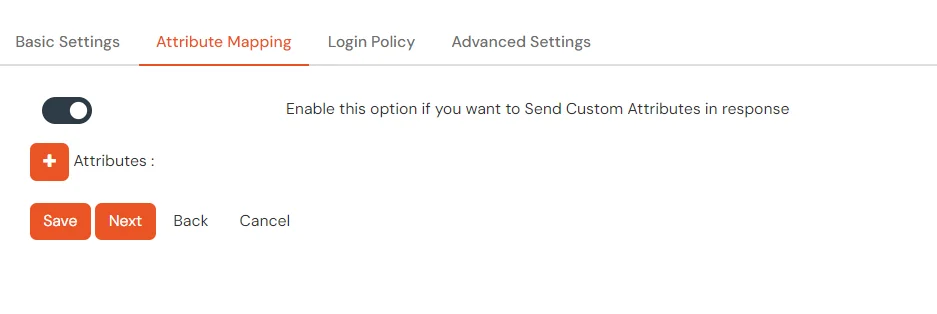
- To send groups in response, you can refer the below table for Vendor group attributes id.
| Vendor Name |
Vendor Attribute |
Value Type |
Attribute |
| Cisco ASA |
ASA-Group_policy |
User |
Groups |
| Fortinet |
Fortinet-Group-Name |
User |
Groups |
| Palo Alto |
PaloAlto-user-Group |
User |
Groups |
| SonicWall |
Sonicwall-user-group |
User |
Groups |
| Citrix |
Citrix-user-groups |
User |
Groups |
| Default(Can be used if your vendor is not in the list) |
Filter-Id |
User |
Groups |
- Value Type and Attribute can be changed based on the requirement.
- Click on Next to proceed.
- Configure the following Policy details for the Radius Client.

| Group Name: |
Group for which the policy will apply. |
| Policy Name: |
Any Identifier that specifies policy name. |
| Login Method |
Login Method for the users associated with this policy. |
| Enable 2-Factor Authentication |
Enables Second Factor during Login for users associated with this policy. |
| Enable Adaptive Authentication |
Enables Adaptive Authentication for Login of users associated with this policy. |
- After configuring the given above details, Click on Save button.
Note: You can follow
this guide, if you want to configure Radius MFA using MSCHAPv2 protocol.
NOTE: For On-Premise version follow the below steps before testing the connectivity.
Only For On-Premise Version
Open Firewall Ports.
- In order to receive the RADIUS request, it is necessary to open UDP traffic on ports 1812 and 1813 for the machine where On-Premise IdP is deployed.
- If the hosting machine is a Windows Machine then you can follow this document.
- If the hosting machine is a Linux Machine then you can follow this document.
NOTE: If your machine is hosted on AWS, then enable the ports from the AWS panel.
2. Configure Oracle DB Server as Radius Client
- First, you must create the RADIUS secret key file from the RADIUS server. For each RADIUS client, the administrator of the RADIUS server creates a shared secret key, which must be less than or equal to 16 characters.
- On the Oracle database server, create a directory:
- (UNIX)
$ORACLE_HOME/network/security
- (Windows)
ORACLE_BASE\ORACLE_HOME\network\security
- Create the file radius.key to hold the shared secret copied from the RADIUS server. Place the file in the directory you created in above step.
- Copy the shared secret key and paste it (and nothing else) into the radius.key file created on the Oracle database server.
- For security purposes, change the file permission of radius.key to read only, accessible only by the Oracle owner.
- If you allow all, you must also specify a default group policy.
- After you create RADIUS secret key file, you are ready to configure the appropriate parameters in the sqlnet.ora file.
- Start Oracle Net Manager.
- (UNIX) From
$ORACLE_HOME/bin
- Enter netmgr command at the command line
- (Windows) Select Start, Programs, Oracle - HOME_NAME, Configuration and Migration Tools, then Net Manager.
- Expand Oracle Net Configuration, and from Local, select Profile.
- From the Naming list, select Network Security.
- Select the Authentication tab.
- From the Available Methods list, select RADIUS.
- Move RADIUS to the Selected Methods list by choosing the right-arrow (>).
- To arrange the selected methods in order of desired use, select a method in the Selected Methods list, and select Promote or Demote to position it in the list.
- Select the Other Params tab.
- From the Authentication Service list, select RADIUS.
- In the Host Name field, accept the localhost as the default primary RADIUS server, or enter another host name.
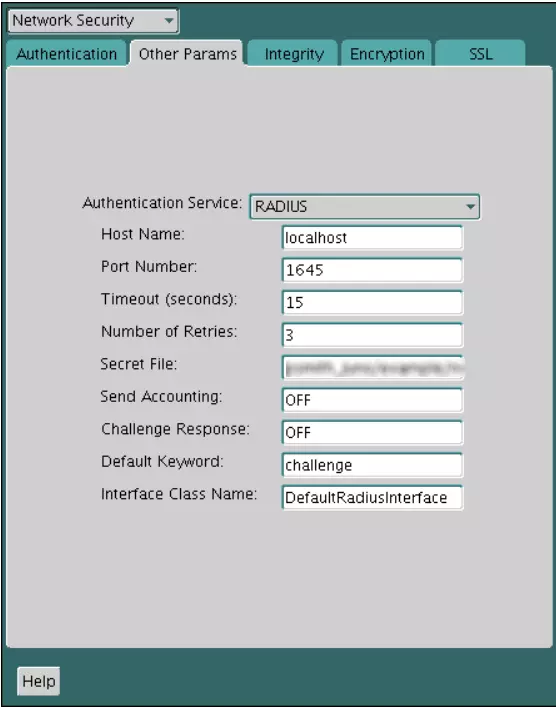
- Ensure that the default value of the Secret File field is valid.
- From the File menu, select Save Network Configuration.
3. Configure Oracle DB Server Initialization Parameters
- After you configure the sqlnet.ora file, you must configure the init.ora initialization file.
- Add the OS_AUTHENT_PREFIX="" setting to the init.ora file.
- Restart the database.
- TO change the default settings, start Oracle Net Manager:
- (UNIX) From
$ORACLE_HOME/bin
- Enter netmgr command at the command line
- (Windows) Select Start, Programs, Oracle - HOME_NAME, Configuration and Migration Tools, then Net Manager.
- Expand Oracle Net Configuration, and from Local, select Profile.
- From the Naming list, select Network Security.
- Click on the Other Params tab.
- From the Authentication Service list, Select RADIUS.
- Change the default setting for any of the following fields:
| Port: |
Specifies the listening port of the primary RADIUS server. The default value is 1645. |
| Timeout (seconds): |
Specifies the time the Oracle database server waits for a response from the primary RADIUS server. The default is 15 seconds. |
| Number of Retries: |
Specifies the number of times the Oracle database server resend messages to the primary RADIUS server. The default is three retries. |
| Secret File: |
Specifies the location of the secret key on the Oracle database server. The field specifies the location of the secret key file, not the secret key itself. |
- From the File menu, select Save Network Configuration.
4. Configure Challenge-Response Mode
- To configure challenge-response mode, you must specify information such as a dynamic password that you obtain from a token card.
- If you are using JDK 1.1.7 or JRE 1.1.7, then set the JAVA_HOME environment variable to the JRE or JDK location on the system where the Oracle client is run:
- On UNIX, enter % setenv JAVA_HOME /usr/local/packages/jre1.1.7B this command at the prompt
- On Windows, select Start, Settings, Control Panel, System, Environment and set the JAVA_HOME variable as c:\java\jre1.1.7B
- Note: This step is not required for any other JDK/JRE version.
- Start Oracle Net Manager.
- (UNIX) From
$ORACLE_HOME/bin
- Enter netmgr command at the command line
- (Windows) Select Start, Programs, Oracle - HOME_NAME, Configuration and Migration Tools, then Net Manager.
- Expand Oracle Net Configuration, and from Local, select Profile.
- From the Naming list, select Network Security.
- Select the Authentication tab.
- From the Available Methods list, select RADIUS.
- In the Challenge Response field, enter ON to enable challenge-response.
- In the Default Keyword field, accept the default value of the challenge or enter a keyword for requesting a challenge from the RADIUS server.
- In the Interface Class Name field, accept the default value of DefaultRadiusInterface or enter the name of the class you have created to handle the challenge-response conversation.
- From the File menu, select Save Network Configuration.
- To create a User and Grant Access, start SQL*Plus and execute following statements:
CONNECT system@database_name;
Enter password: <password>
CREATE USER username IDENTIFIED EXTERNALLY;
GRANT CREATE SESSION TO USER username;
EXIT
- If you are using Windows, you can use the Security Manager tool in Oracle Enterprise Manager.
- Enter the same username in the RADIUS server's users file.
5. Configure Your User Directory
miniOrange provides user authentication from various external sources, which can be Directories (like ADFS, Microsoft Active Directory, Microsoft Entra ID, OpenLDAP, Google, AWS Cognito etc), Identity Providers (like Okta, Shibboleth, Ping, OneLogin, KeyCloak), Databases (like MySQL, Maria DB, PostgreSQL) and many more. You can configure your existing directory/user store or add users in miniOrange.
Note: You can follow this guide, if you want to configure Radius MFA with your users stored in Microsoft Entra ID using OAuth Password Grant.
Configure your existing directories such as Microsoft Active Directory, Microsoft Entra ID, OpenLDAP, etc.
- Click on External Directories >> Add Directory in the left menu of the dashboard.

- Select Directory type as AD/LDAP.

- STORE LDAP CONFIGURATION IN MINIORANGE: Choose this option if you want to keep your configuration in miniOrange. If active directory is behind a firewall, you will need to open the firewall to allow incoming requests to your AD.
- STORE LDAP CONFIGURATION ON PREMISE: Choose this option if you want to keep your configuration in your premise and only allow access to AD inside premises. You will have to download and install miniOrange gateway in your premise.

- Enter LDAP Display Name and LDAP Identifier name.
- Select Directory Type as Active Directory.
- Enter the LDAP Server URL or IP Address against LDAP Server URL field.
- Click on Test Connection button to verify if you have made a successful connection with your LDAP server.

- In Active Directory, go to the properties of user containers/OU's and search for Distinguished Name attribute.
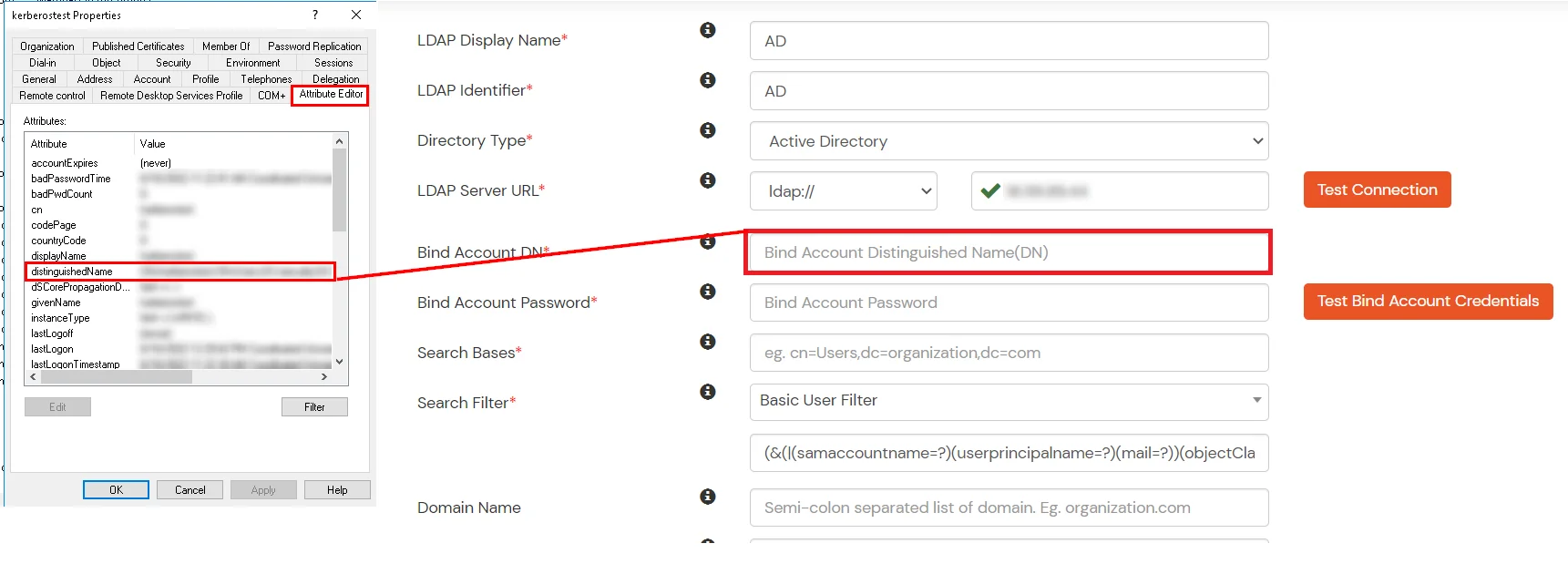
- Enter the valid Bind account Password.
- Click on Test Bind Account Credentials button to verify your LDAP Bind credentials for LDAP connection.

- Search Base is the location in the directory where the search for a user begins. You will get this from the same place you got your Distinguished name.

- Select a suitable Search filter from the drop-down menu. If you use User in Single Group Filter or User in Multiple Group Filter, replace the <group-dn> in the search filter with the distinguished name of the group in which your users are present. To use custom Search Filter select "Write your Custom Filter" option and customize it accordingly.

- You can also configure following options while setting up AD. Enable Activate LDAP in order to authenticate users from AD/LDAP. Click on the Save button to add user store.

Here's the list of the attributes and what it does when we enable it. You can enable/disable accordingly.
| Attribute |
Description |
| Activate LDAP |
All user authentications will be done with LDAP credentials if you Activate it |
| Sync users in miniOrange |
Users will be created in miniOrange after authentication with LDAP |
| Fallback Authentication |
If LDAP credentials fail then user will be authenticated through miniOrange |
| Allow users to change password |
This allows your users to change their password. It updates the new credentials in your LDAP server |
| Enable administrator login |
On enabling this, your miniOrange Administrator login authenticates using your LDAP server |
| Show IdP to users |
If you enable this option, this IdP will be visible to users |
| Send Configured Attributes |
If you enable this option, then only the attributes configured below will be sent in attributes at the time of login |
- Click on Save. After this, it will show you the list of User stores. Click on Test Connection to check whether you have enter valid details. For that, it will ask for username and password.

- On Successful connection with LDAP Server, a success message is shown.
- Click on Test Attribute Mapping.

- Enter a valid Username. Then, click on Test. Mapped Attributes corresponding to the user are fetched.

- After successful Attribute Mapping Configuration, go back to the ldap configuration and enable Activate LDAP in order to authenticate users from AD/LDAP.
Refer our guide to setup LDAPS on windows server.
User Import and Provisioning from AD
Note: Below steps are used to enable one time or manual sync. To enable sync on scheduled basis, you should use LDAP gateway module. Read more and download the LDAP gateway module.
- Go to Settings >> Product Settings in the Customer Admin Account.
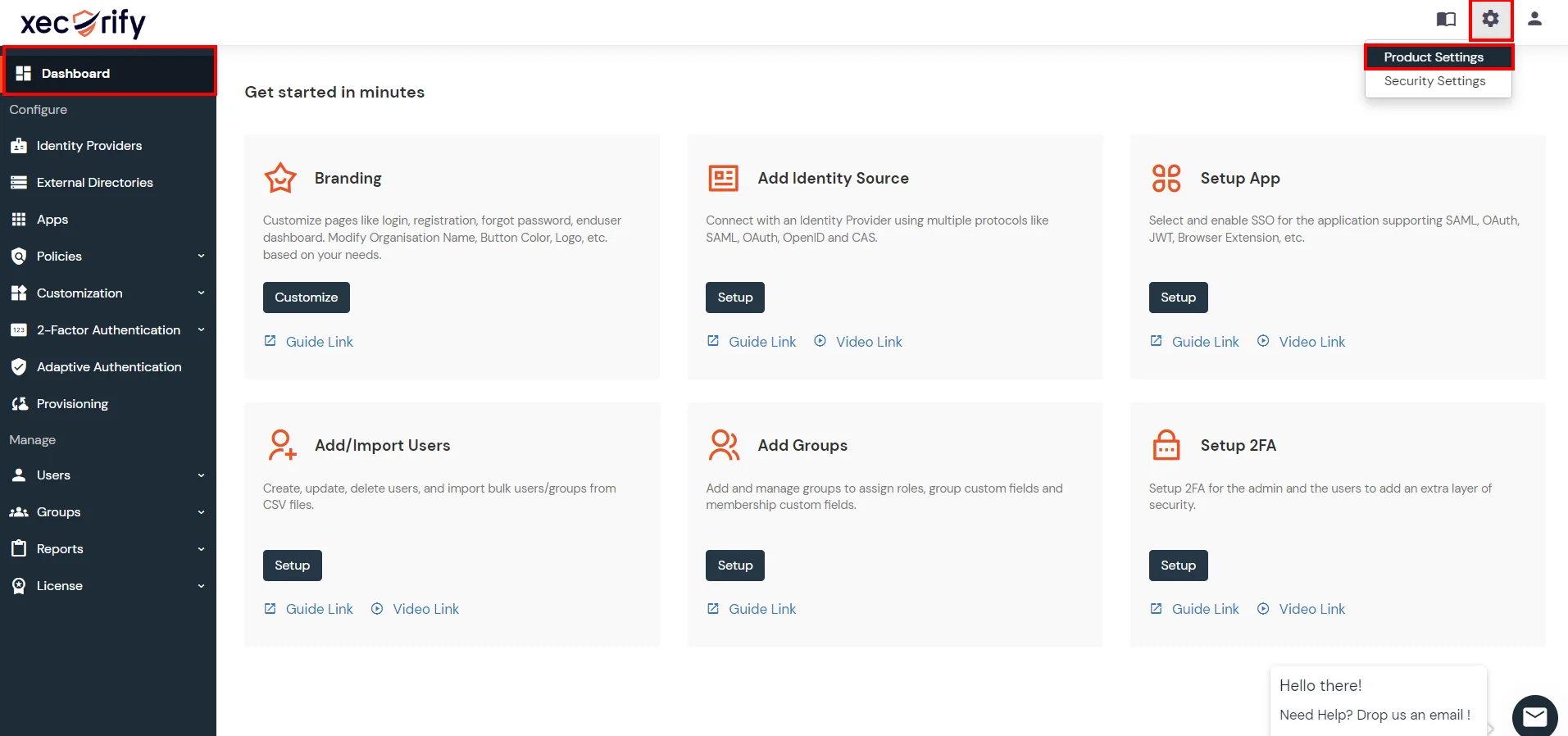
- Enable the "Enable User Auto Registration" option and click Save.

- (Optional) To send a welcome email to all the end users that will be imported, enable the "Enable sending Welcome Emails after user registration" option and click Save.

- From the Left-Side menu of the dashboard select Provisioning.
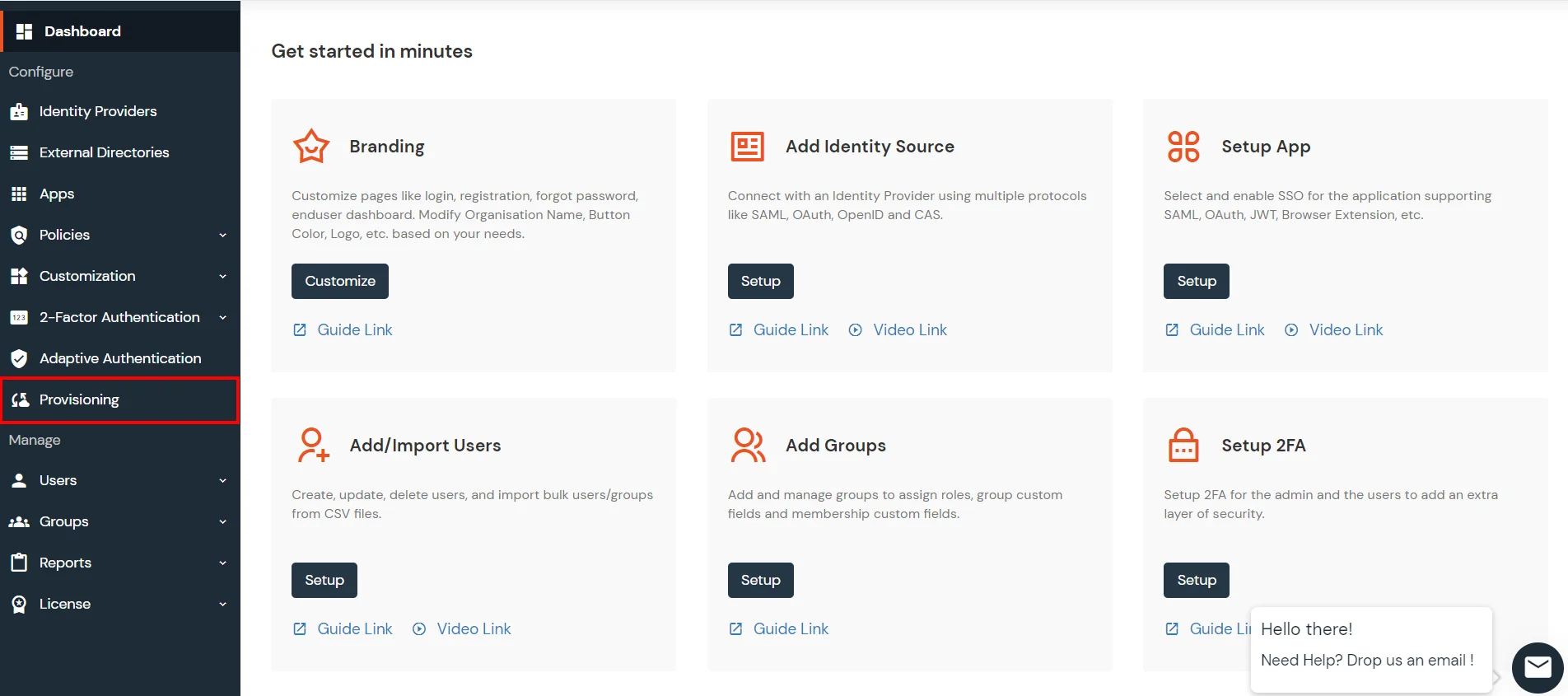
- In Setup Provisioning tab select Active Directory in the Select Application drop-down.
- Toggle the Import Users tab, click on Save button.
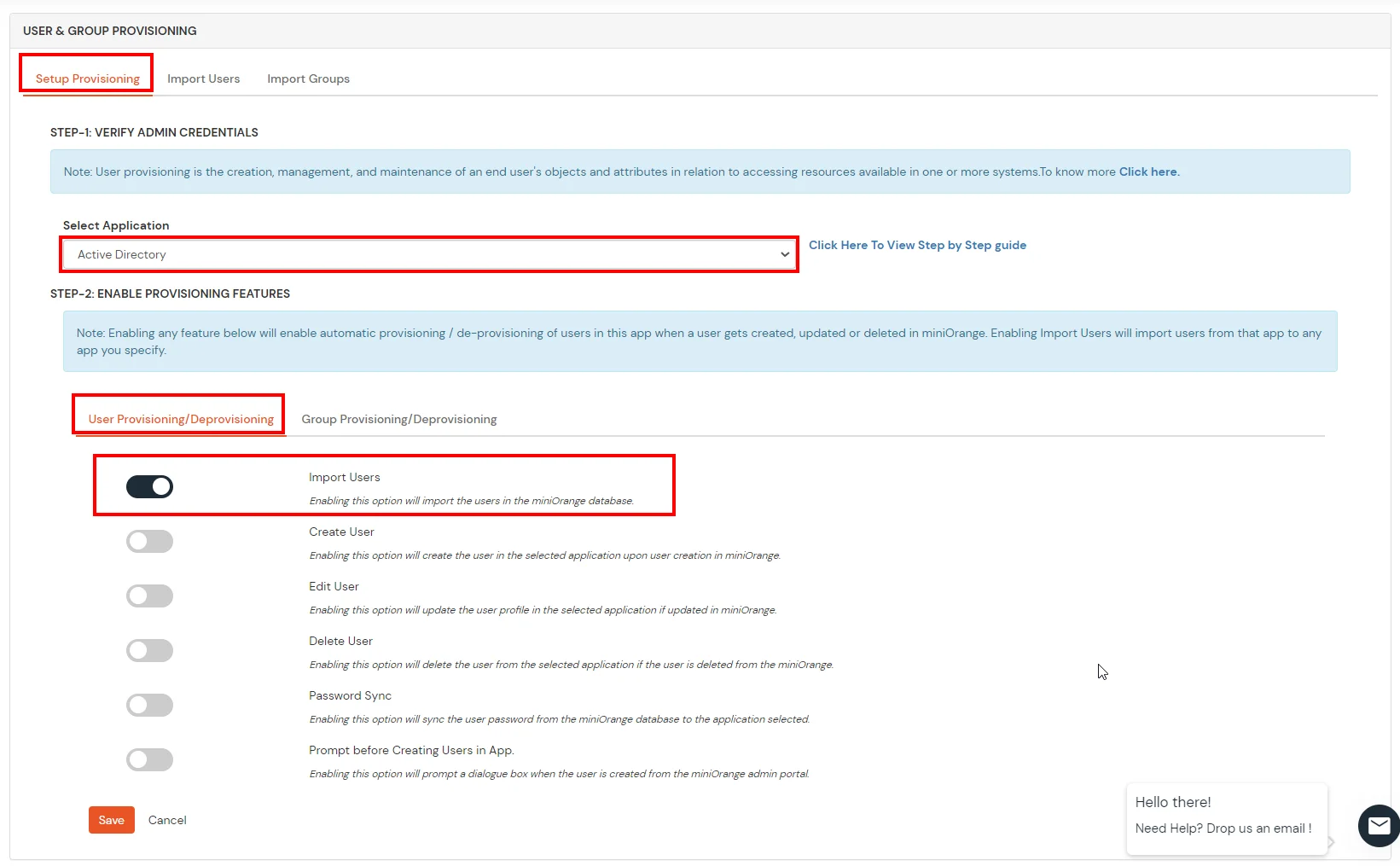
- On the same section, switch to Import Users section.
- Select Active Directory from the dropdown and click on the Import Users tab, to import all the users from Active Directory to miniOrange.

- You can view all the Users you have imports by selecting Users >> User List from Left Panel.
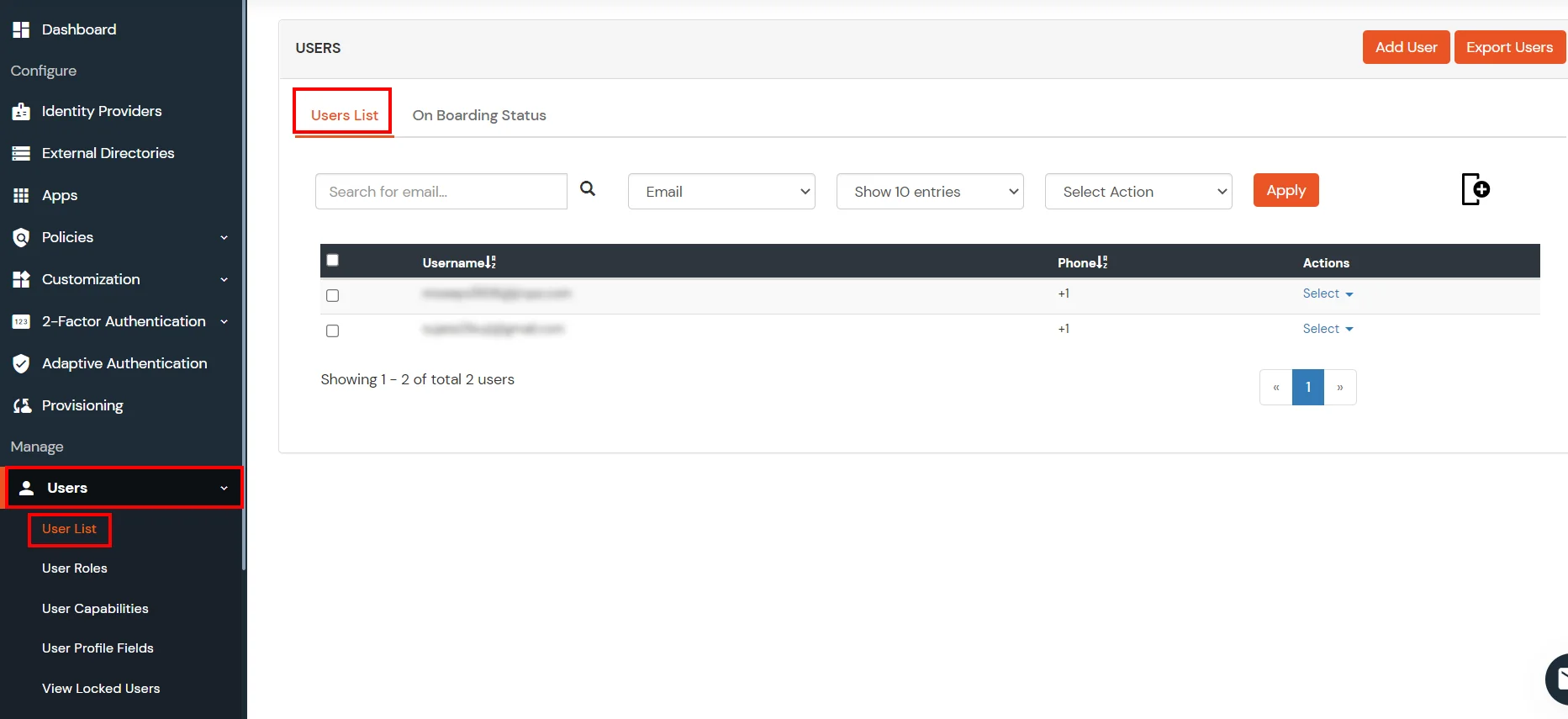
- All the imported users will be auto registered.
- These groups will be helpful in adding multiple 2FA policies on the applications.
Creating User Groups (Recommended)
- Select Groups >> Manage Groups from left panel.
- Click on the Create Group button on the top.
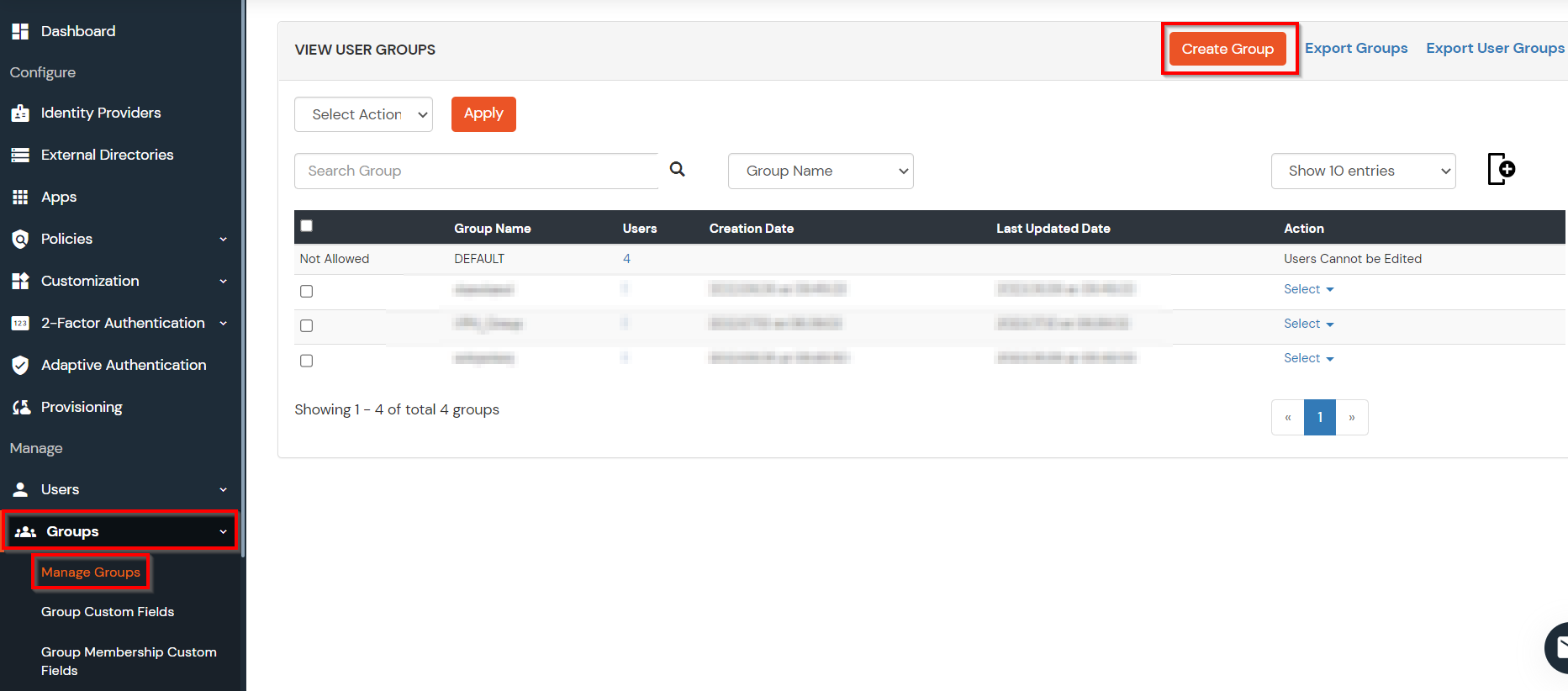
- Enter an appropriate Group Name and click on Create Group.

- In this guide we have created a Group by name VPN_Group.
- Assign various members to the group using the Assign User option associated with the group in the groups list.
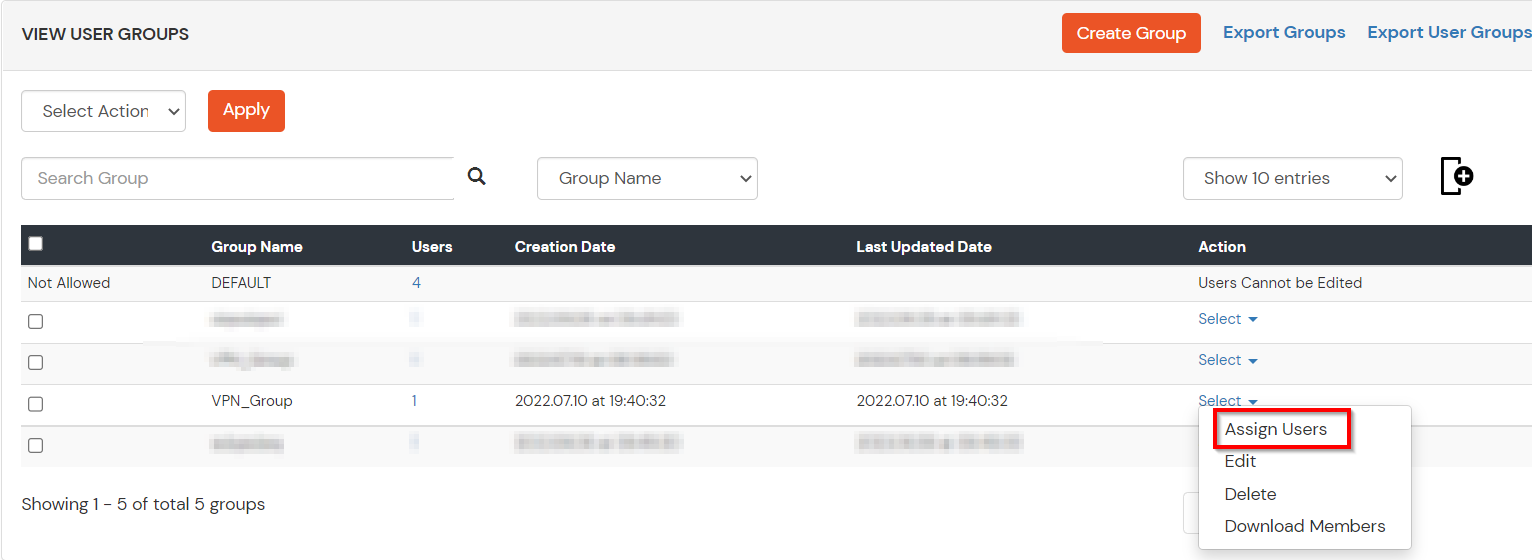
- Select the Users that are required to be assigned to this group. Then Select Assign to Group in Select Action Dropdown and click on Apply button.
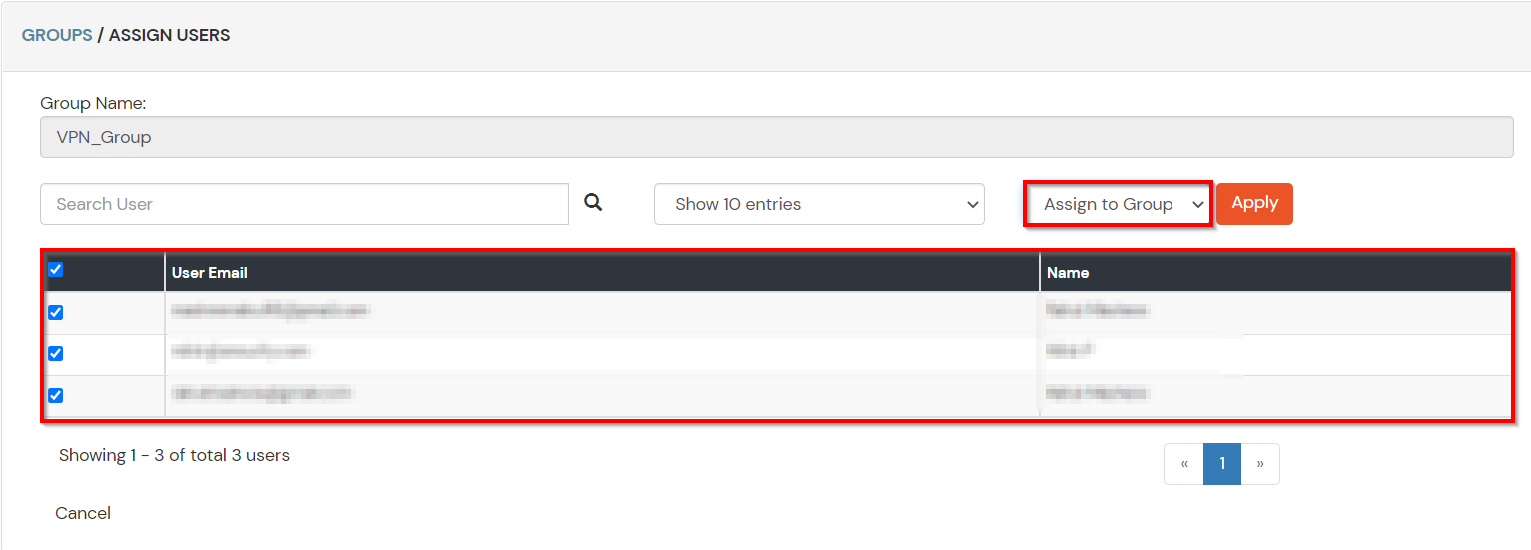
- These groups will be helpful in adding multiple 2FA policies on the applications.
6. Setup MFA for Oracle DB
Note: You can follow this guide, if you want to customize and enroll MFA for end users.
- Here, we will configure a policy for the User Group that we created in this step and associate it with the Oracle DB VPN Application.
- Click on Policies tab >> App Login Policy.
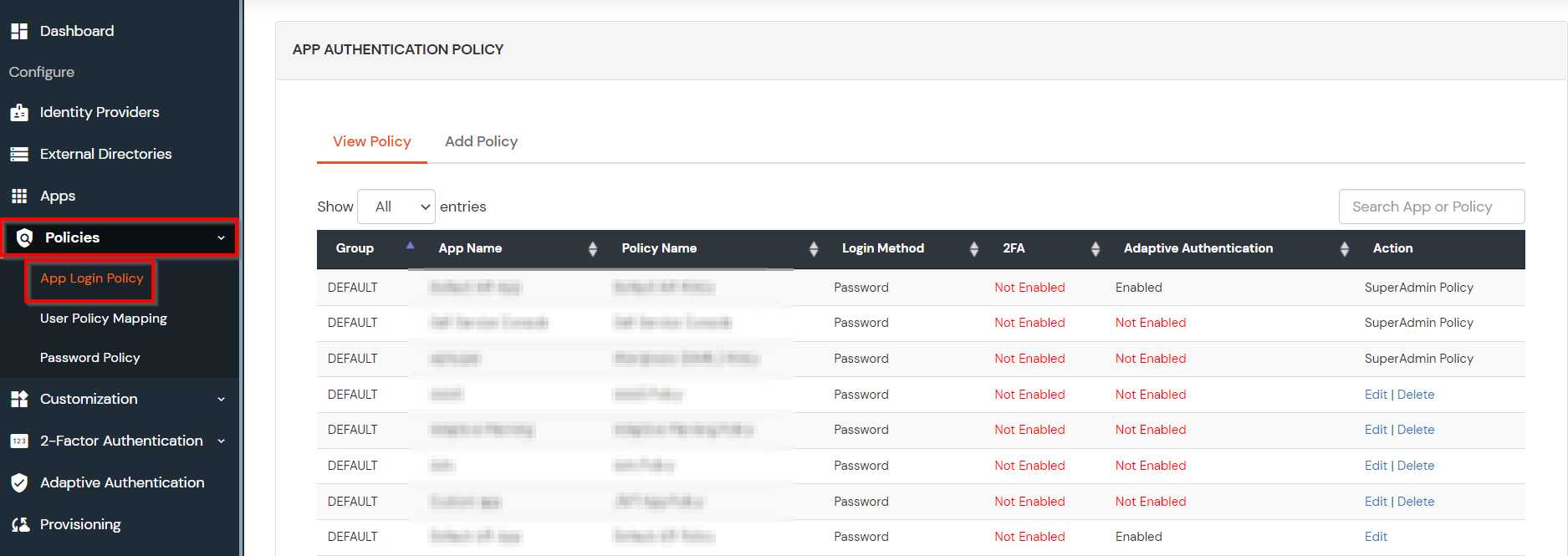
- Click on Add Policy tab.
- In Application section, select the RADIUS App that we configured earlier in Step 1.
- Select the required User Group in Group Name and enter the Policy name.
- In this guide, we will configure a Password Only policy for "VPN_Group", so that only the VPN_Group members can access VPN Services without a Second Factor.
- Once done with the policy settings, click on Save to Add Policy.
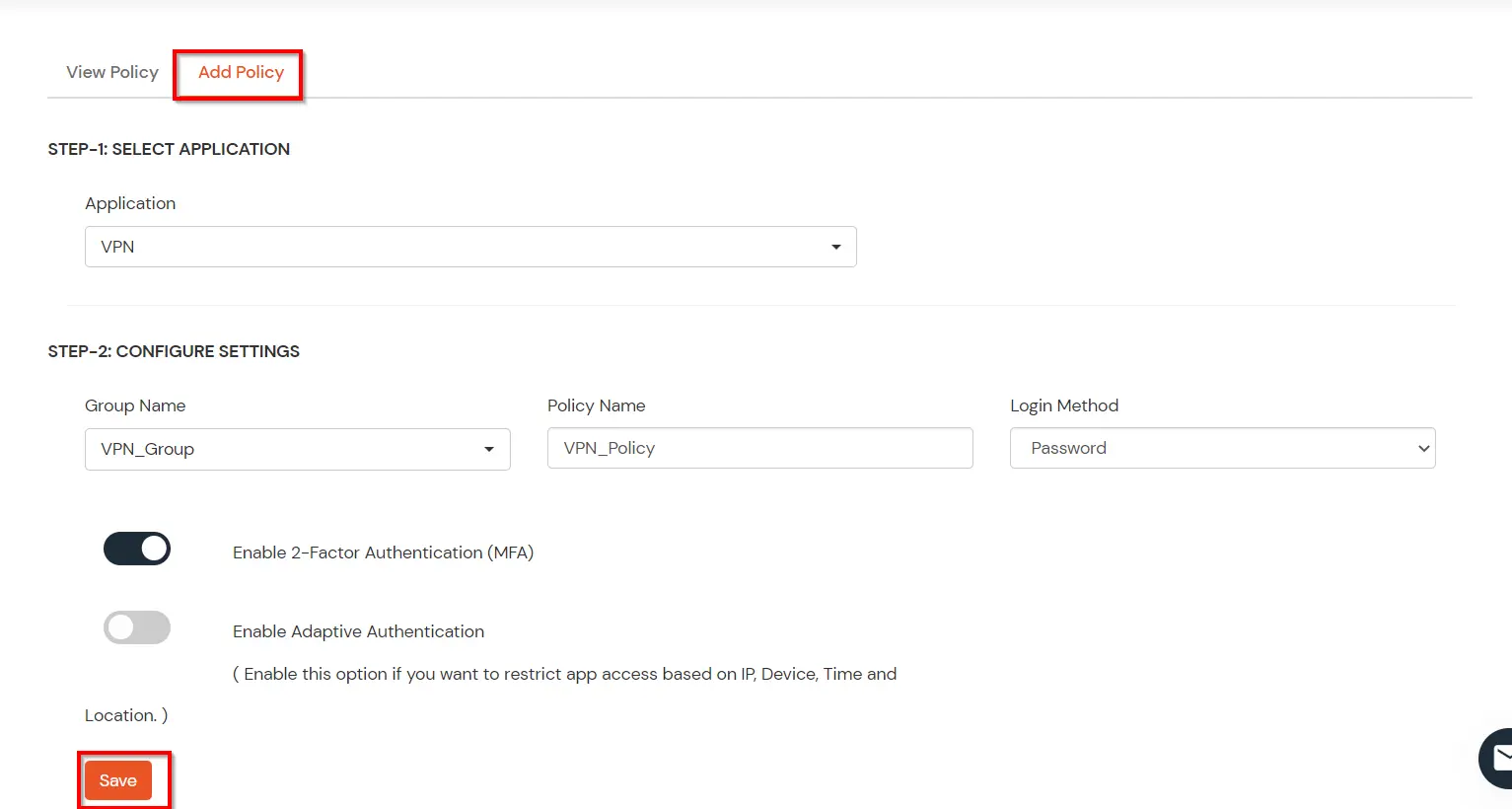
7. Test 2FA for Oracle DB Login
- Connect to your Oracle Database using sqlplus.
- Enter your username and password in the GUI prompt.
- Enter the 2-Factor Authentication Code.
- After successful authentication, you'll be connected to your Oracle database.
Further References




































